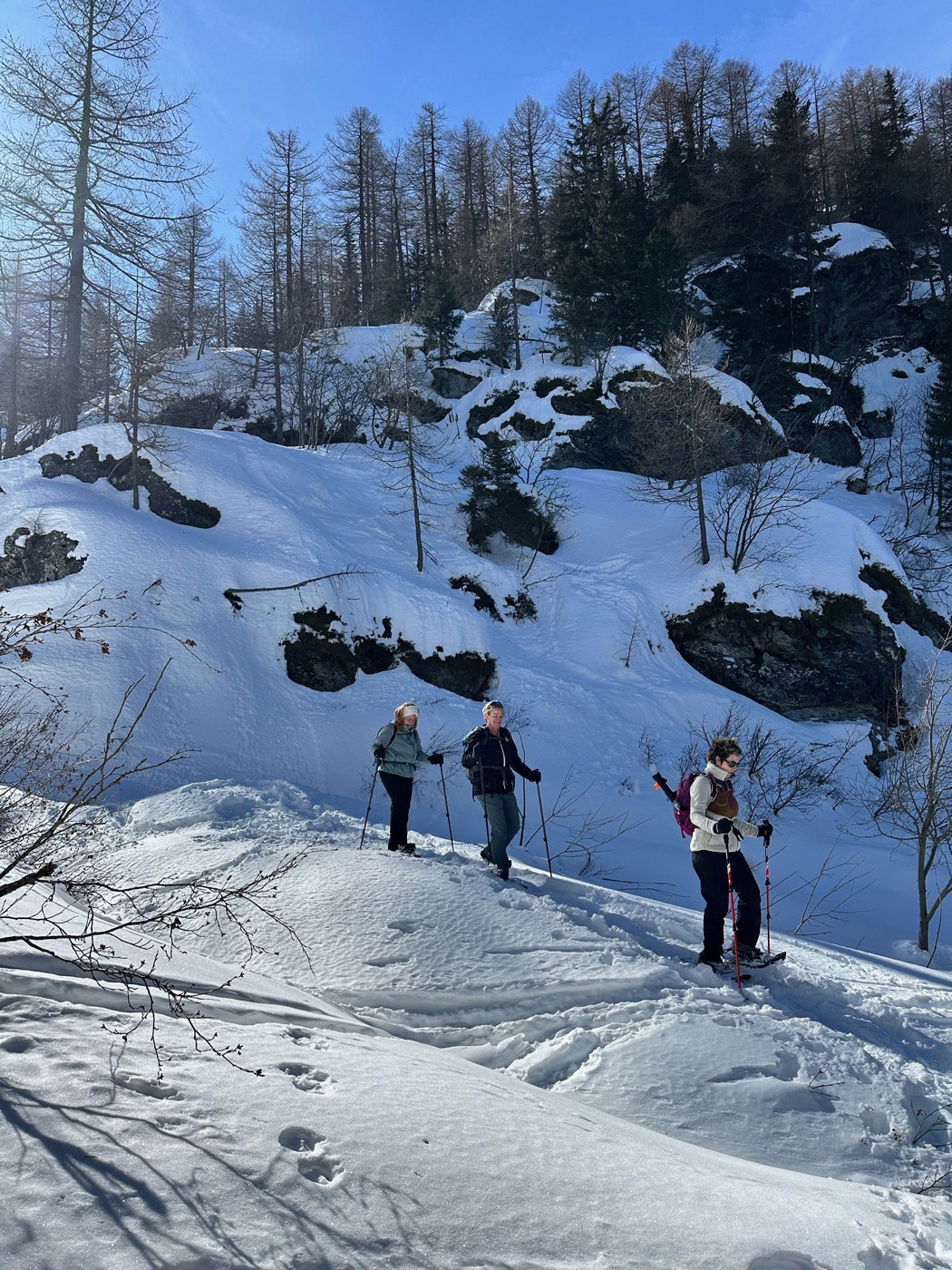 I meet all kinds of clients in winter. Some have never really thought about avalanches, while others can’t stop worrying about them. Both reactions are completely understandable. That’s why I thought it might be helpful to share a bit more about avalanche risk, and how, with the right approach, we can reduce it to a very low level during a snowshoe tour.
I meet all kinds of clients in winter. Some have never really thought about avalanches, while others can’t stop worrying about them. Both reactions are completely understandable. That’s why I thought it might be helpful to share a bit more about avalanche risk, and how, with the right approach, we can reduce it to a very low level during a snowshoe tour.
I’ll keep it simple here, but if you’d like to dive deeper into this fascinating and complex topic, I’m always happy to explain more out in the field, during one of my winter hikes.
.
How I Plan Safe Routes
Avalanche safety starts long before we step outside. Every route I plan is based on a combination of three factors: terrain, snow and weather conditions, and human factors.
I study the daily avalanche bulletin, recent weather patterns, snowpack stability, slope angle, and exposure. I look at how the wind has moved snow, where the sun hits, and how temperatures have changed. Even small shifts in these elements can make a big difference.
Most of my snowshoe routes are chosen to avoid avalanche-prone terrain altogether. But the Alps are living, dynamic mountains, and conditions change constantly. There’s no such thing as zero risk, which is why I always include margins: alternative route options, conservative decision-making, and clear group communication.
.
Practising Before We Go
Whenever we enter terrain where the snowpack might be less stable, I like to practise beforehand. Everyone learns how to use an avalanche transceiver, probe, and shovel, the three essential tools that we always carry on every trip.
These exercises are practical and straightforward, but they also bring focus and calm. The first moment someone locates a buried beacon in the snow, you can almost see the relief, and the understanding that time, teamwork, and skill can make all the difference in an emergency.
It’s not about creating fear, but about building awareness. Knowing how to act means we can move through winter landscapes with confidence and respect.
.
Reading the Snow
During the hike, I constantly read the environment, how the snow feels underfoot, how it sounds, how the wind behaves. We travel one by one on steeper sections, keep distance, and observe small signs together. Everyone stays engaged and aware.
Avalanche safety isn’t only about science; it’s also about humility. Nature doesn’t always follow our models or forecasts. By staying alert, adaptable, and calm, we reduce our exposure and keep the experience enjoyable and safe.
I’ve never had to put my avalanche training into practice in a real situation, and I hope I never will. But knowing that we’re prepared allows us to move through these mountains with a quiet kind of confidence.
We come back with warm cheeks, tired legs, and that deep calm that only a winter day in the mountains can bring. Beneath it all lies respect, for the snow, for the terrain, and for the invisible forces shaping them.
.
Join a Winter Hike
If you’d like to experience what it’s like to move safely and mindfully through this winter world, you’re welcome to join one of my guided snowshoe hikes.
You’ll learn how to read the terrain, sense the snow, and travel with awareness, skills that stay with you long after the hike ends.

